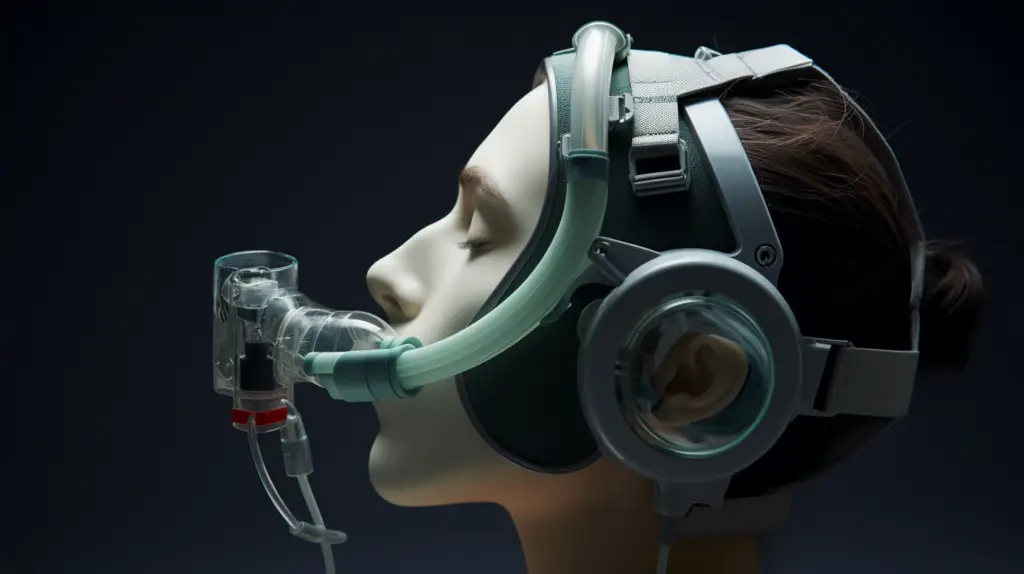Sleep apnea is a common yet serious sleep disorder that affects millions of people worldwide. Characterized by repeated interruptions in breathing during sleep, sleep apnea can lead to a range of health complications if left untreated. However, despite its prevalence, many aspects of this disorder remain misunderstood.

This article aims to dispel the myths and illuminate the facts about sleep apnea, providing the knowledge you need to understand this condition better.
1. What is Sleep Apnea: Sleep apnea is a condition where breathing repeatedly stops and starts during sleep. This cessation of breathing can occur hundreds of times a night, often without the person being aware of it.
2. Types of Sleep Apnea: There are three types of sleep apnea – obstructive, central, and mixed. Obstructive sleep apnea, the most common type, is caused by a blockage of the airway. Central sleep apnea occurs when the brain doesn’t send proper signals to the muscles controlling breathing. Mixed sleep apnea is a combination of both.
3. Prevalence: According to the American Sleep Apnea Association, sleep apnea affects more than 22 million Americans, with many cases still likely undiagnosed.
4. Underdiagnosed: Despite its prevalence, sleep apnea remains underdiagnosed. It’s estimated that up to 80% of moderate to severe obstructive sleep apnea cases are undiagnosed.
5. Symptoms: Common symptoms of sleep apnea include loud snoring, restless sleep, morning headaches, daytime sleepiness, and waking up with a dry mouth or sore throat.
6. Snoring: While not everyone who snores has sleep apnea, snoring is a common symptom of this disorder. However, it’s the snoring with periods of silence followed by gasps that is a significant indicator of sleep apnea.
7. Health Risks: Untreated sleep apnea can lead to various health complications, including high blood pressure, heart disease, stroke, diabetes, and depression.
8. Sleep Deprivation: The repeated awakenings associated with sleep apnea make restful sleep impossible, leading to severe daytime drowsiness, fatigue, and irritability.
9. Weight and Sleep Apnea: Overweight individuals are more likely to develop obstructive sleep apnea, as excess fat deposits around the upper airway can obstruct breathing.
10. Age Factor: Although sleep apnea can occur at any age, the risk increases as you get older.
READ MORE: 25 Important Facts about Cardiac Arrest: All You Need to Know
11. Gender Disparity: Men are two to three times more likely than women to have sleep apnea. However, the risk for women increases after menopause.
12. Family History: If you have family members with sleep apnea, your risk of developing the disorder increases.
13. Smoking and Alcohol: Smoking can increase the amount of inflammation and fluid retention in the upper airway, which can cause sleep apnea. Similarly, alcohol and certain medications can relax the muscles in the throat, worsening sleep apnea.
14. Diagnosis: Sleep apnea is usually diagnosed with a sleep study (polysomnogram), either at a sleep disorder center or at home.
15. CPAP Therapy: The most common treatment for sleep apnea is Continuous Positive Airway Pressure (CPAP) therapy. It involves wearing a mask over your nose and/or mouth while you sleep, which provides a constant stream of air that keeps your airways open.
16. Oral Appliances: Dentists can design oral appliances that help keep the airway open during sleep. These are often used as an effective treatment for mild to moderate sleep apnea.
17. Lifestyle Changes: In some cases, lifestyle changes such as losing weight, quitting smoking, or avoiding alcohol and sedatives can help manage sleep apnea symptoms.
18. Surgery: Various surgical procedures can increase the size of the airway, such as nasal surgery, throat surgery, or oral surgery.
19. Positional Therapy: For some people, sleep apnea symptoms are worse when sleeping on their back. Positional therapy involves methods to keep individuals on their side during sleep.
20. Impact on Quality of Life: Untreated sleep apnea can impact quality of life, leading to poor performance in everyday activities, increased risk of accidents, and decreased productivity at work.
21. Association with ADHD: Some research suggests a possible connection between sleep apnea and attention deficit hyperactivity disorder (ADHD) in children.
22. Sleep Apnea and Memory: People with sleep apnea often suffer from memory problems and have difficulty concentrating.
23. Association with Cancer: Some studies suggest a link between sleep apnea and an increased risk of developing certain types of cancer, but more research is needed.
24. Sleep Apnea and Mood Disorders: Sleep apnea can contribute to mood disorders, including depression and anxiety.
25. Treatment Can Improve Life: Proper treatment of sleep apnea can result in improved mood, increased productivity, reduced daytime sleepiness, and overall better quality of life.
Understanding sleep apnea and its impacts can help individuals seek timely treatment and prevent potential health complications. Remember, if you or your loved ones exhibit symptoms of sleep apnea, it’s essential to consult a healthcare provider. After all, a good night’s sleep is not just about rest, it’s the cornerstone of good health.


